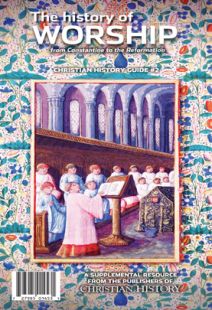Of sermons and friars
ANECDOTES such as this appeared in collections of sermon illustrations: A certain knight loved most ardently the martyr St. Thomas of Canterbury, and sought everywhere to obtain some relic of him. When a certain wily priest, in whose house he was staying, heard of this he said to him, “I have by me a bridle which St. Thomas used for a long time, and I have often experienced its virtues.” When the knight heard this, and believed it, he joyfully paid the priest the money which the latter demanded and received the bridle with great devotion.
God truly, to whom nothing is impossible, wishing to reward the faith of the knight and for the honor of his martyr, deigned to work many miracles through the same bridle. The knight seeing this founded a church in honor of the martyr and in it he placed as a relic the bridle of that most wicked priest. (Caesar of Heisterbach, Dist. VIII, Cap. LXX. [Vol. 2, p. 140], in Translations and Reprints from the Original Sources of European History)
This excerpt is from the Franciscan Rule of 1223, which still governs the Franciscan order. It lays down some guidelines for the friars’ preaching: The friars must not preach in the diocese of any bishop if they have been forbidden to do so by him. And no brother should dare preach to the people unless he has been examined and approved by the minister general of his brotherhood and the office of preaching has been conceded to him. I also admonish and exhort the brothers that in their preaching their words be studied and chaste, useful and edifying to the people, telling them about vices and virtues, punishment and glory; and they ought to be brief, because the Lord kept his words brief when he was on earth. CH
(www.fordham.edu/Halsall/source/stfran-rule.asp.)
By The editors
[Christian History originally published this article in Christian History Issue #102+ in 2012]
Next articles
What did the worship space look like?
Constantine changed church architecture
Jennifer Woodruff TaitWorship at the eve of the Reformation
Medieval people went to church to hear, to taste, to smell, and to see
Jennifer Woodruff TaitClothes fit for a bishop
What the well-dressed bishop wore in the Middle Ages
Reprinted from the Oxford History of Christian WorshipWhat did “sacrament” mean to medieval Christians? And how many were there?
How the Middle Ages came to settle on seven sacraments
Jennifer Woodruff TaitSupport us
Christian History Institute (CHI) is a non-profit Pennsylvania corporation founded in 1982. Your donations support the continuation of this ministry
Donate



